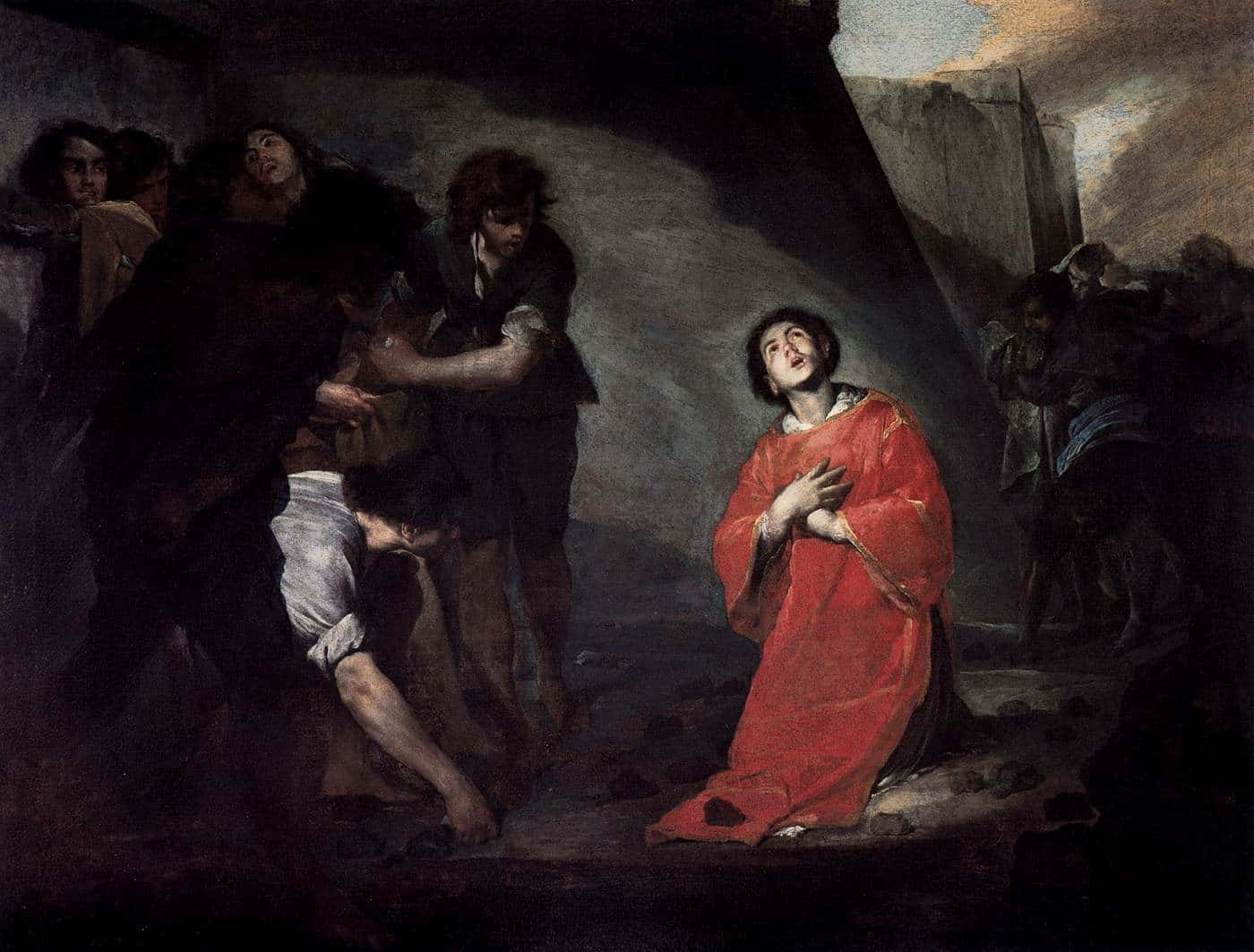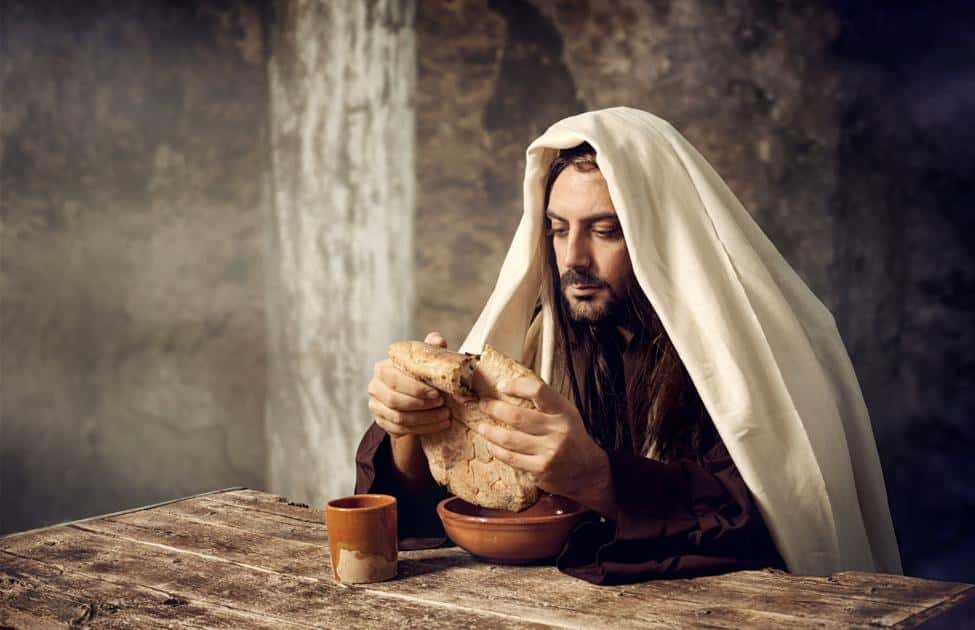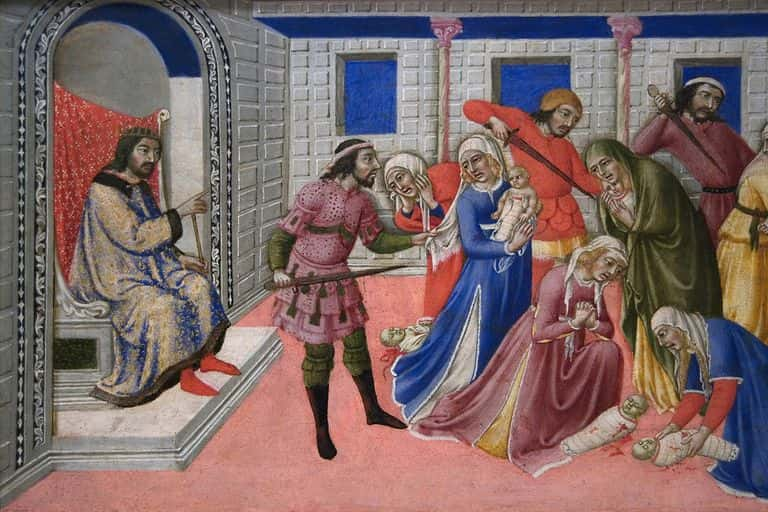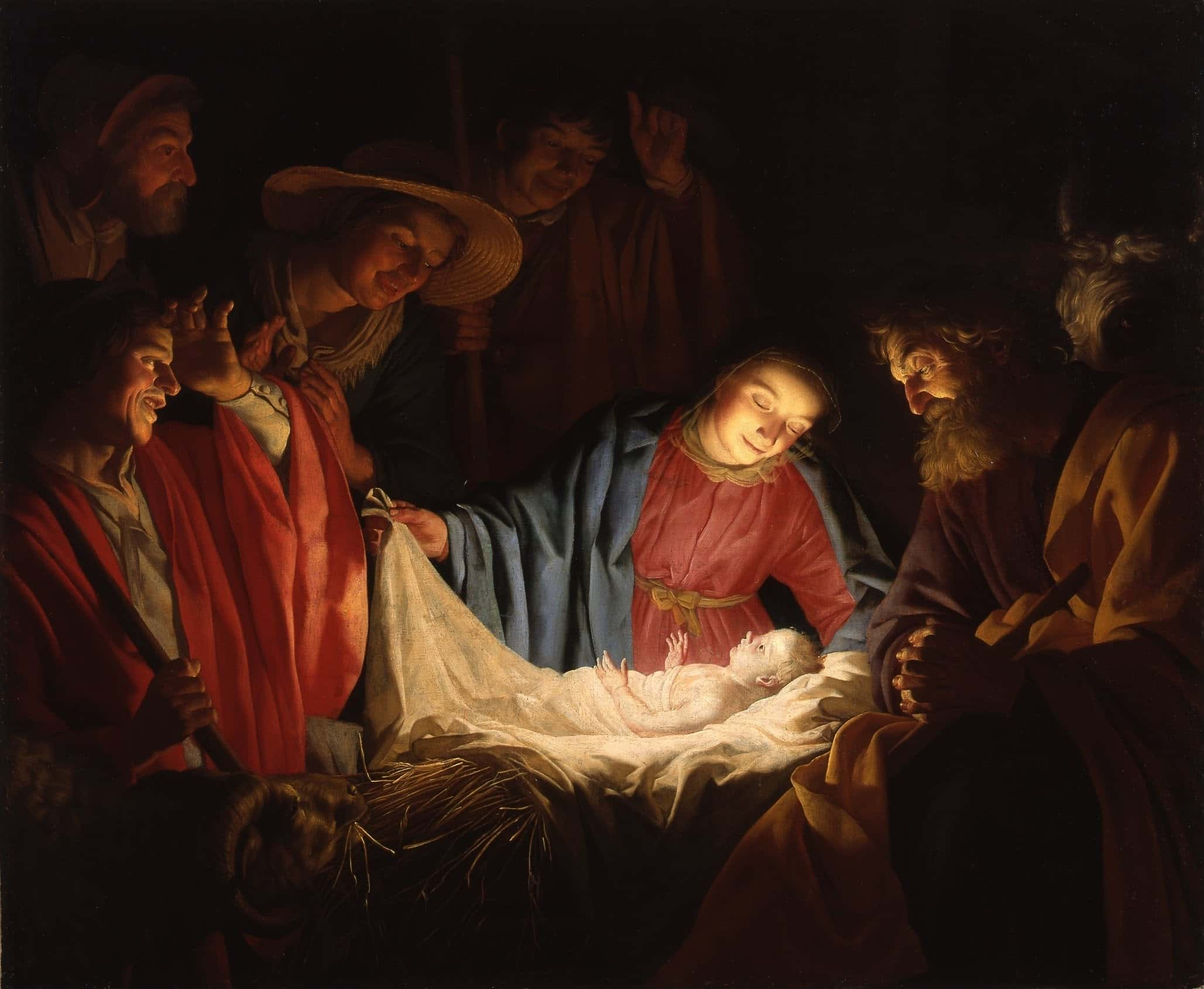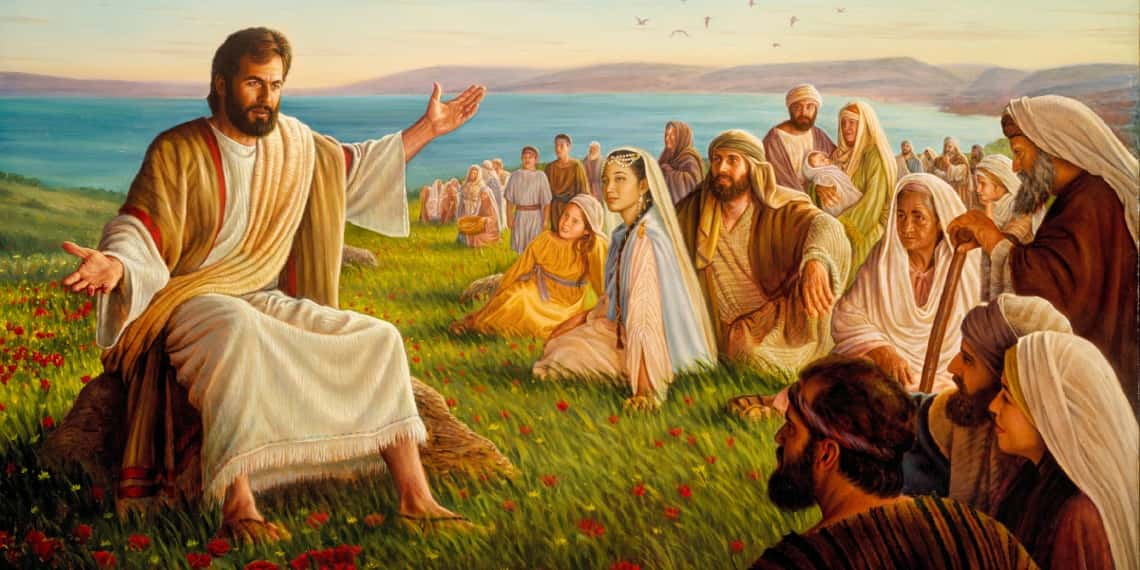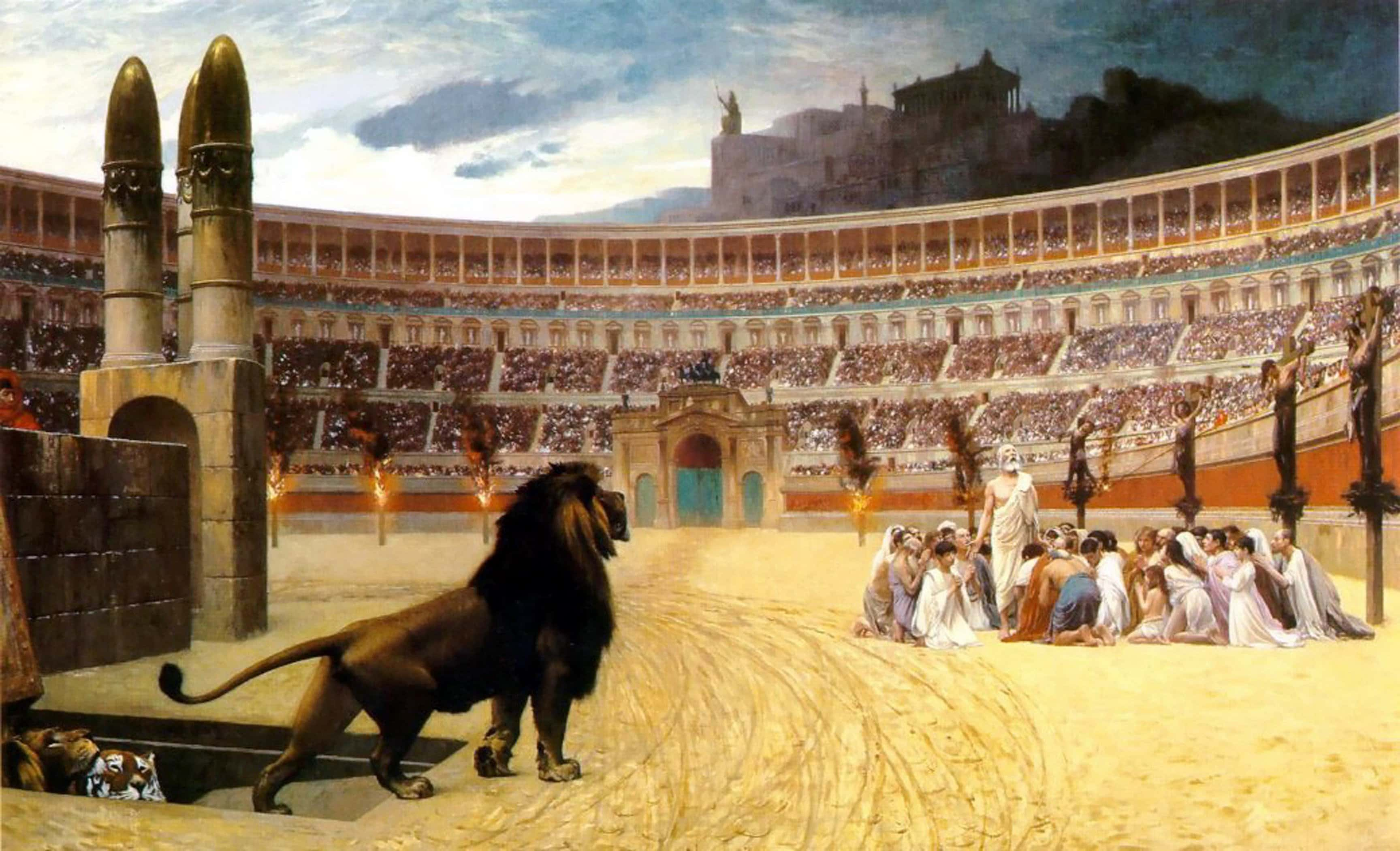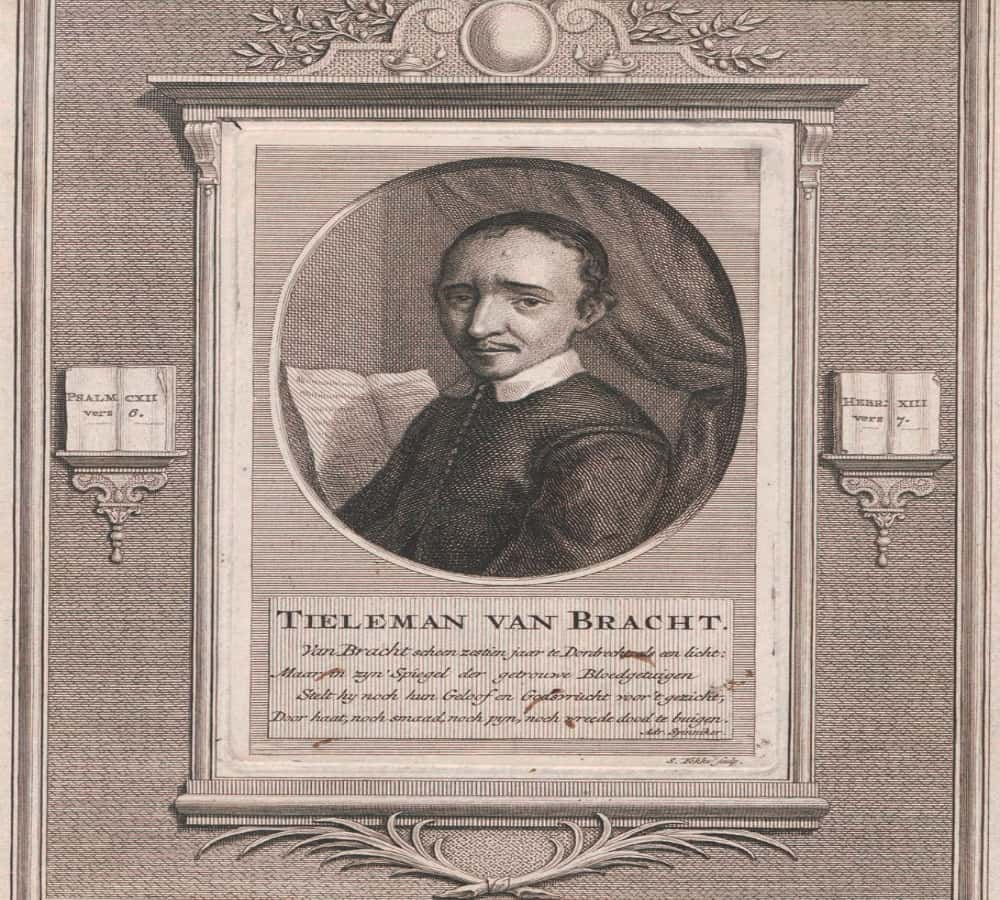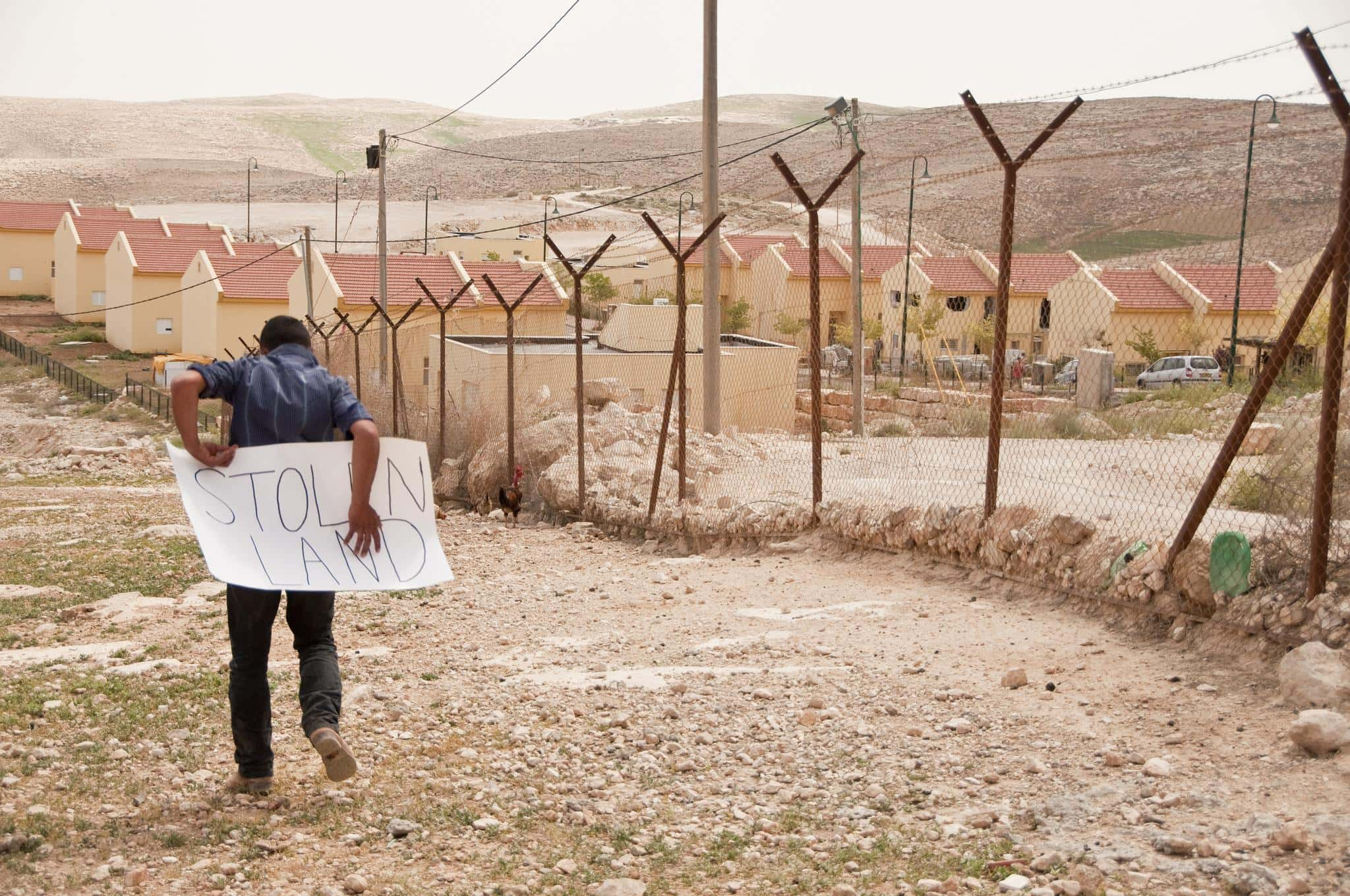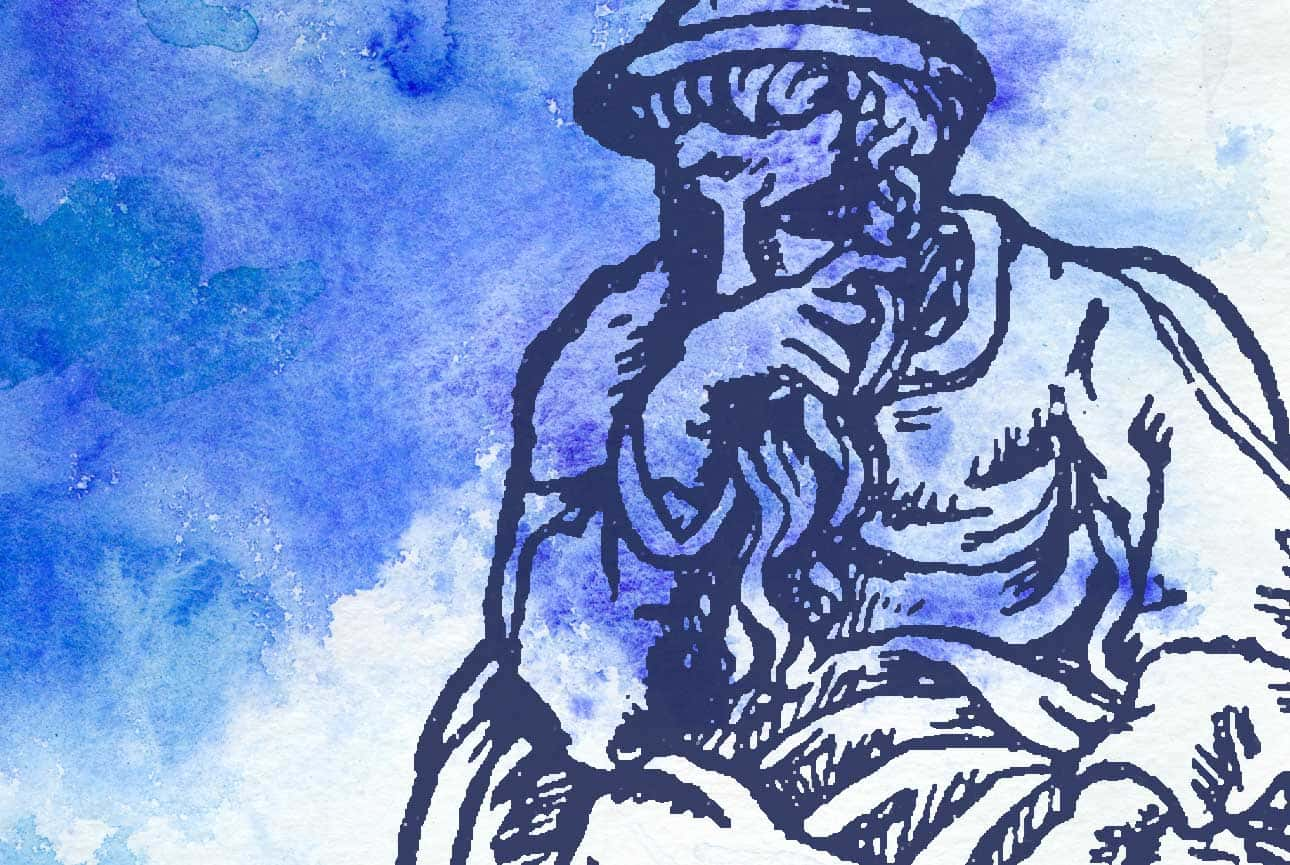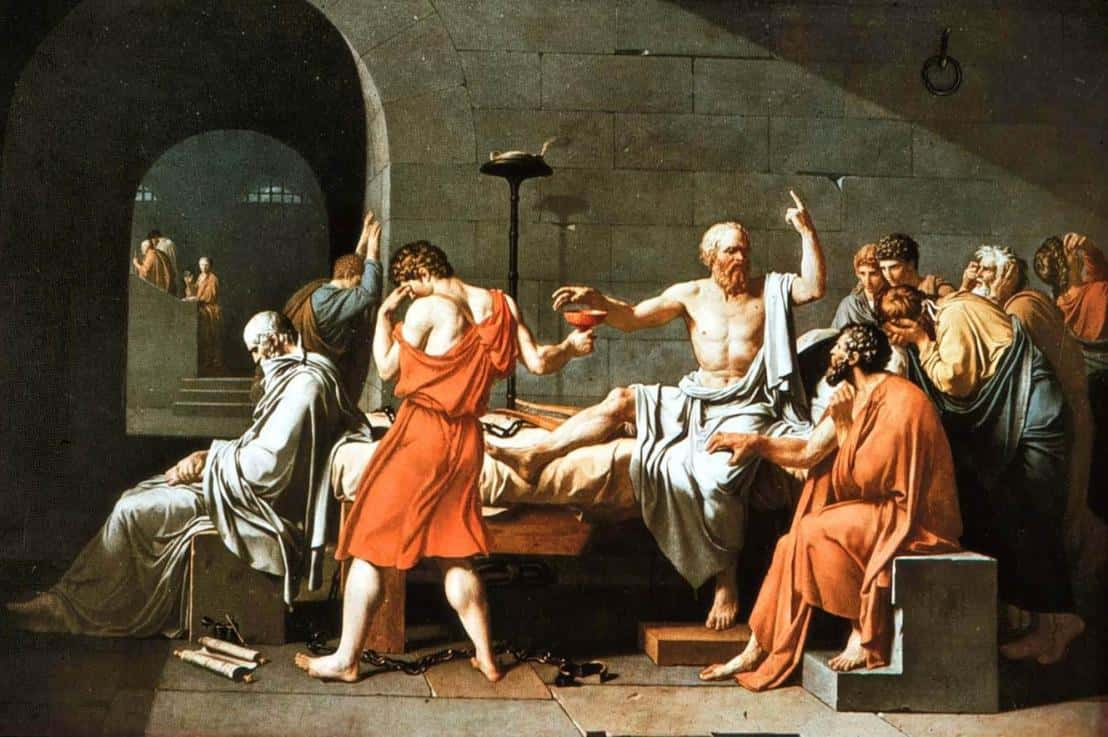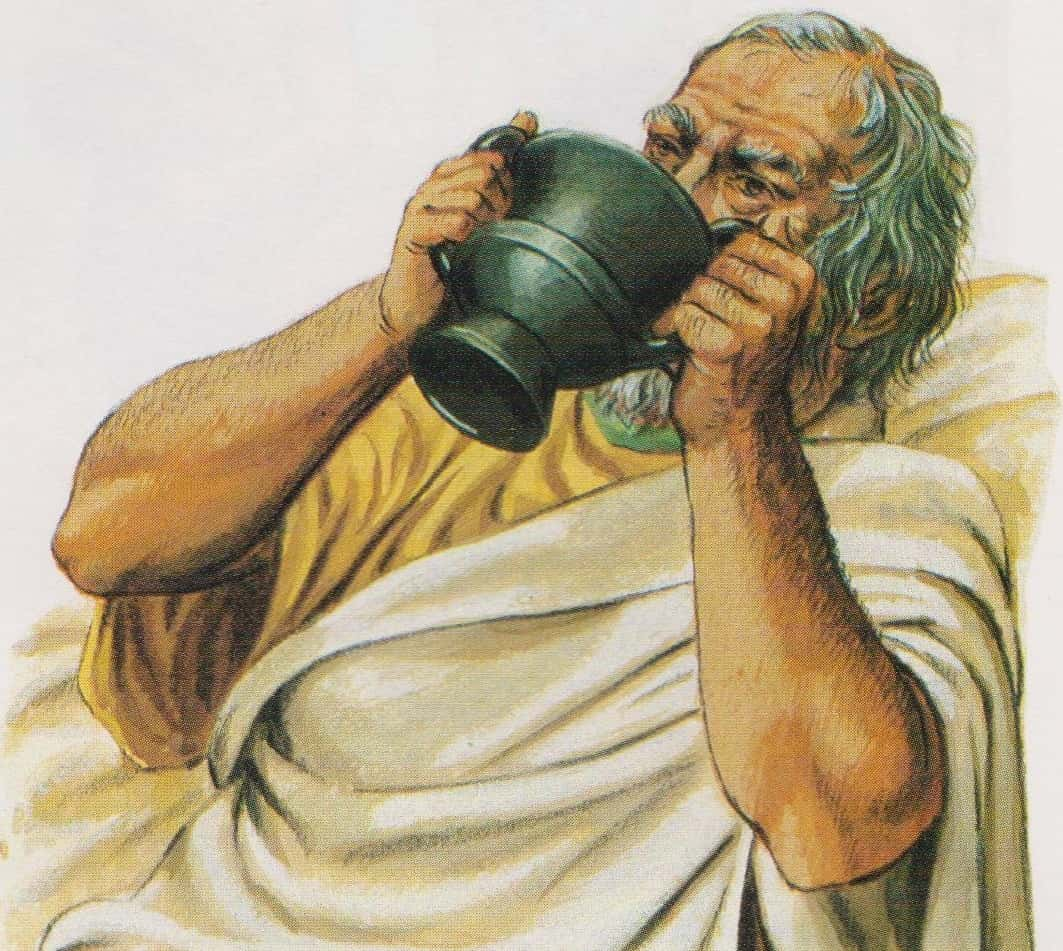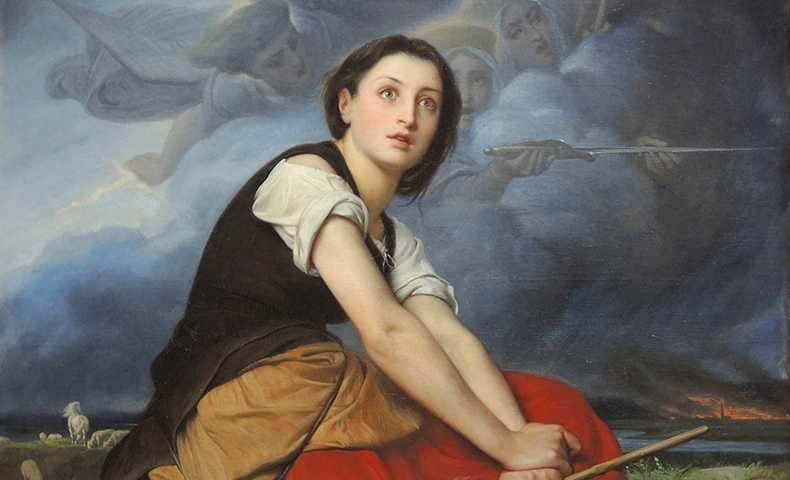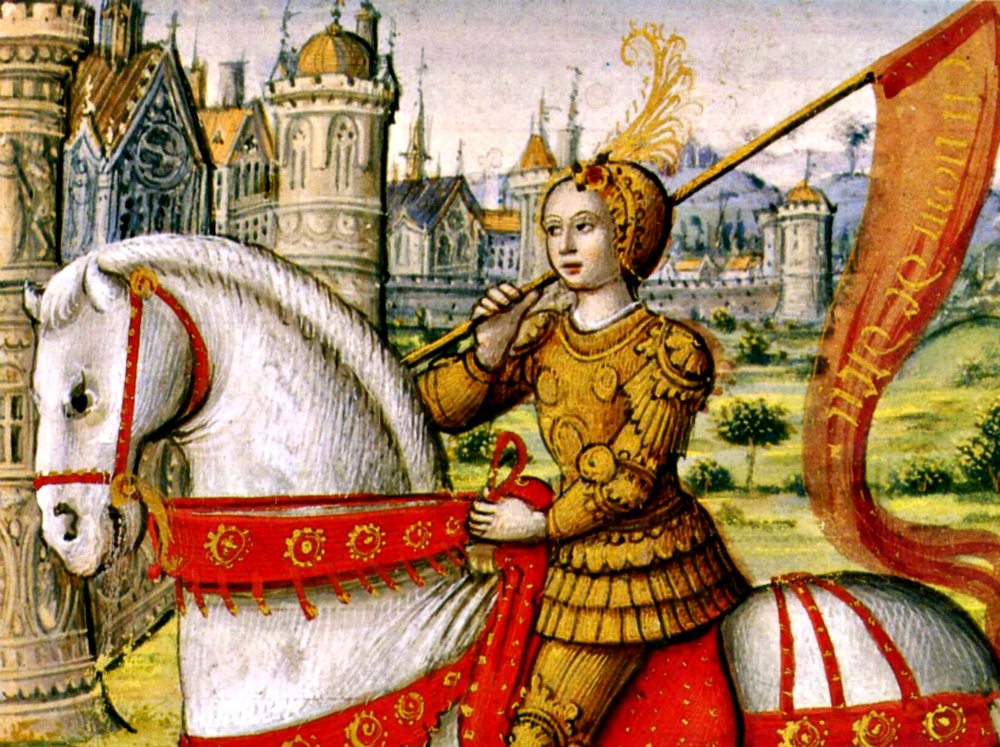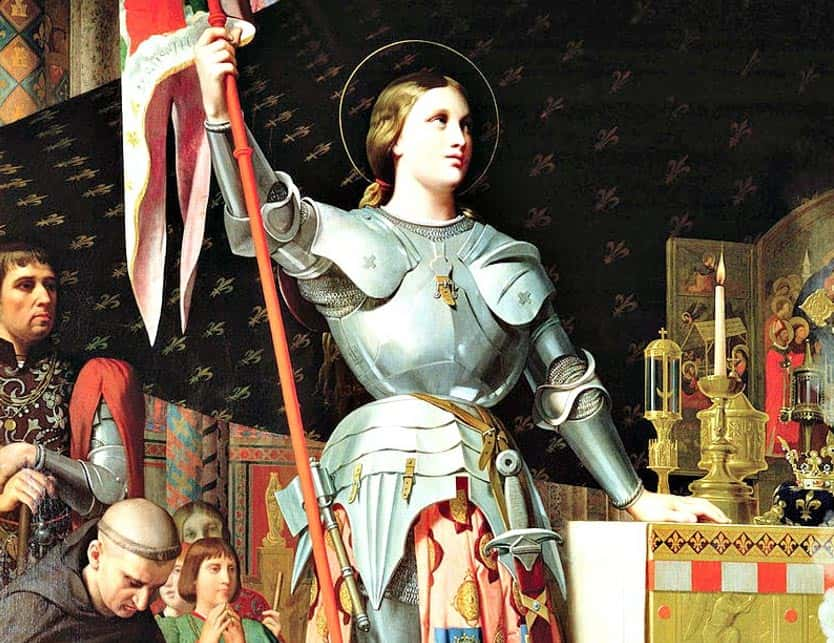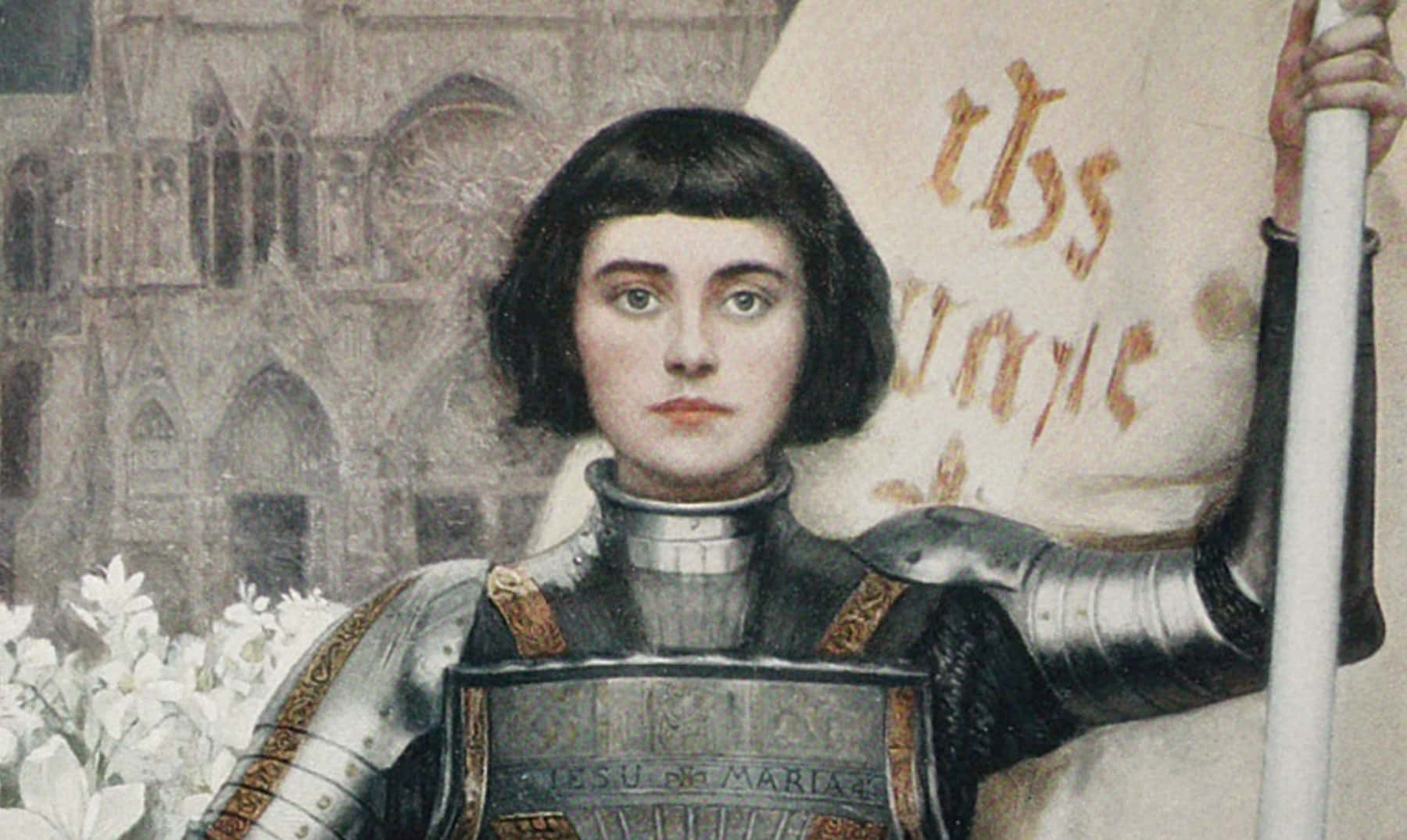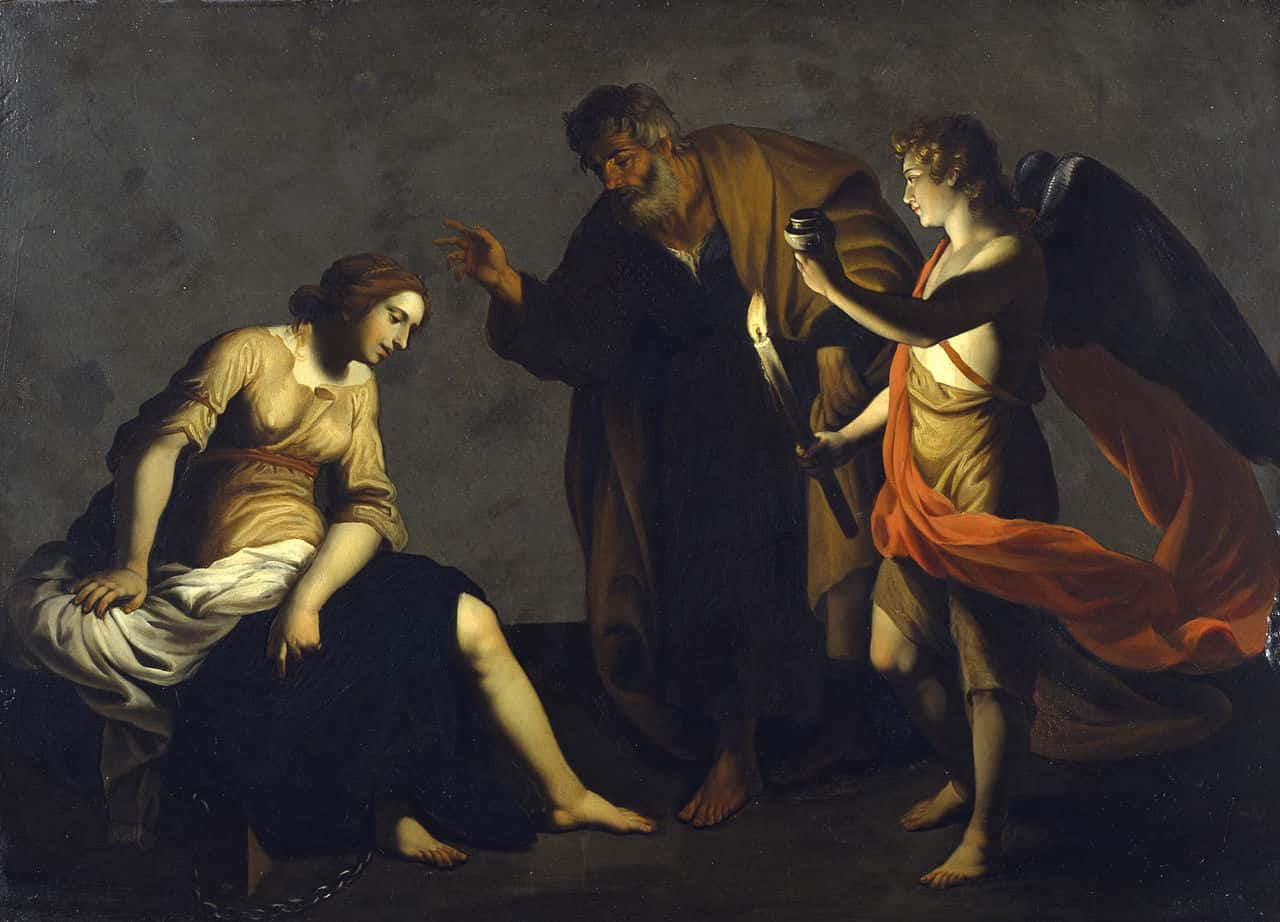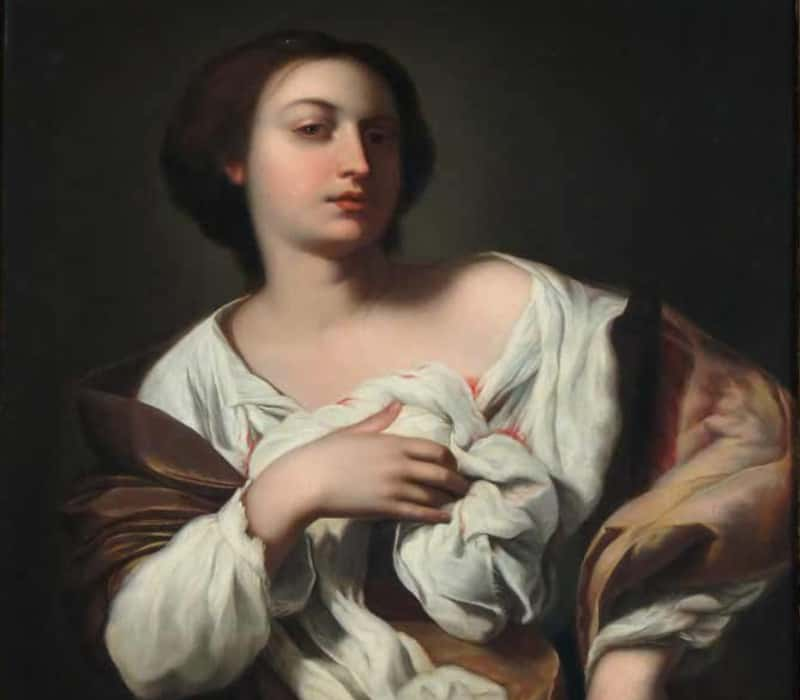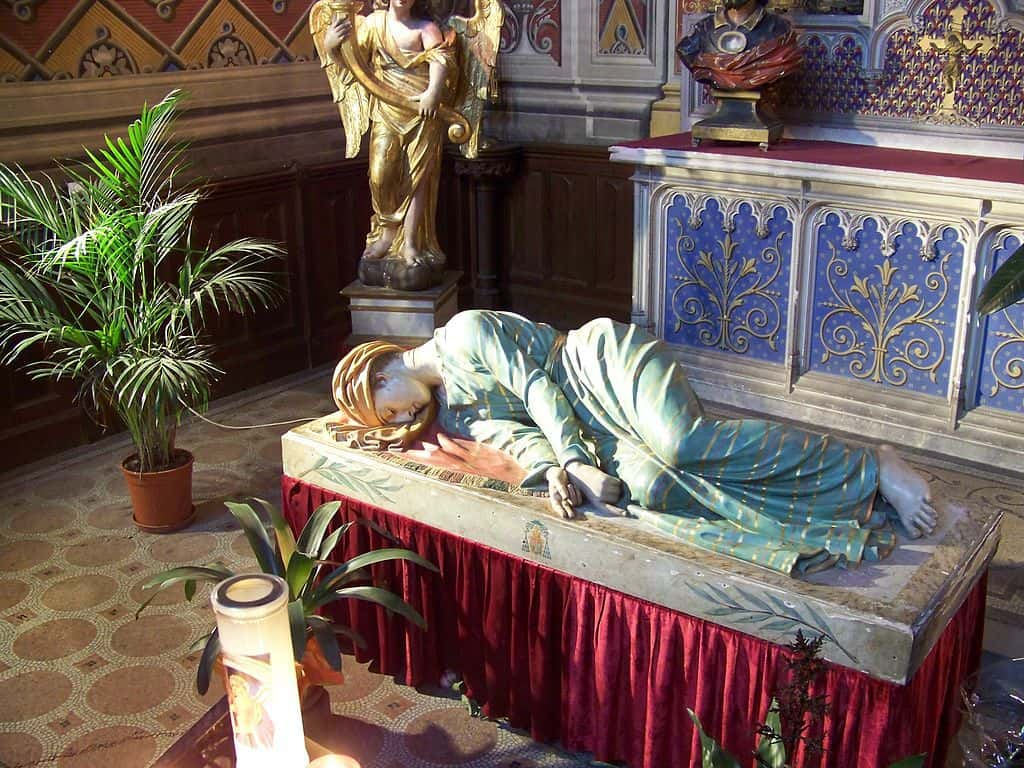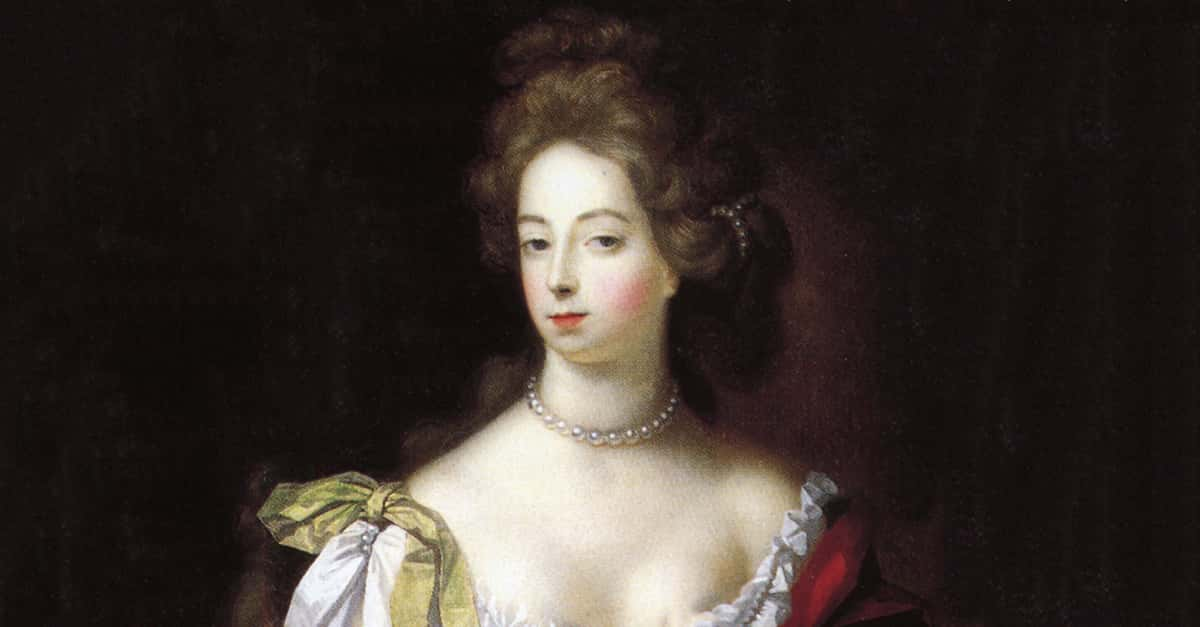“Children say that people are hung sometimes for speaking the truth.”—Joan of Arc
Whether religious, political, or social, martyrs have a powerful sway over the public's imagination. Their sacrifices give their messages power and meaning, and give them a life far beyond their tragic ends. What could be more inspiring than that? However, there are countless stories of martyrdom that never receive due recognition. Here are some of the most interesting facts about the role of martyrdom in history and the different people who have given everything for what they believed in.
Martyrs Facts
40. Intra-Religious Violence
The Vatican maintained for years that there are 100,000 Christian martyrs every year. However, depending on how you look at it, their statistics might appear a little skewed. This number was derived mostly from victims of the genocides in the Democratic Republic of Congo and Rwanda. Of the ~4 million people killed in these conflicts between 2000 and 2010, 900,000 of them have been declared martyrs, which averages out to about 90,000 per year. The problem is that the deaths of these Christians are coming at the hands of other Christians, so it can be hard to argue that they were killed because of their faith.
39. Origin
The word martyr is derived from the Greek word martys, meaning “witness.” It can also be translated as “testimony.”
38. Eat Some Jesus
The Romans weren’t the best at understanding the cultures of others, and they really got early Christians wrong. The Romans misunderstood the sacrament of Eucharist, where Christians consume the body and blood of Christ through bread and wine, and instead took it to mean that the Christians were cannibals.
37. Slipper Boy
The first Christian Martyr is, of course, Jesus of Nazareth. However, he almost never made it, as Herod, the client King of Judea at the time of Jesus’ birth, had put out an order to have all boys under the age of two slaughtered in an effort to protect himself from a messiah being born.
36. Our Calendar Is Off
Since Jesus was born during the time of Herod’s rule over Judea, that means that he wasn't actually born in the year 0, but rather between the years of 6-4BC, as Herod died in 4 BC.
35. Jesus the Builder
Jesus was a carpenter, but not quite a carpenter as we think of them today, as he actually probably did much more than work with wood. In Jesus' time, those who were “carpenters” did a wide range of work, and would better be described as construction workers.
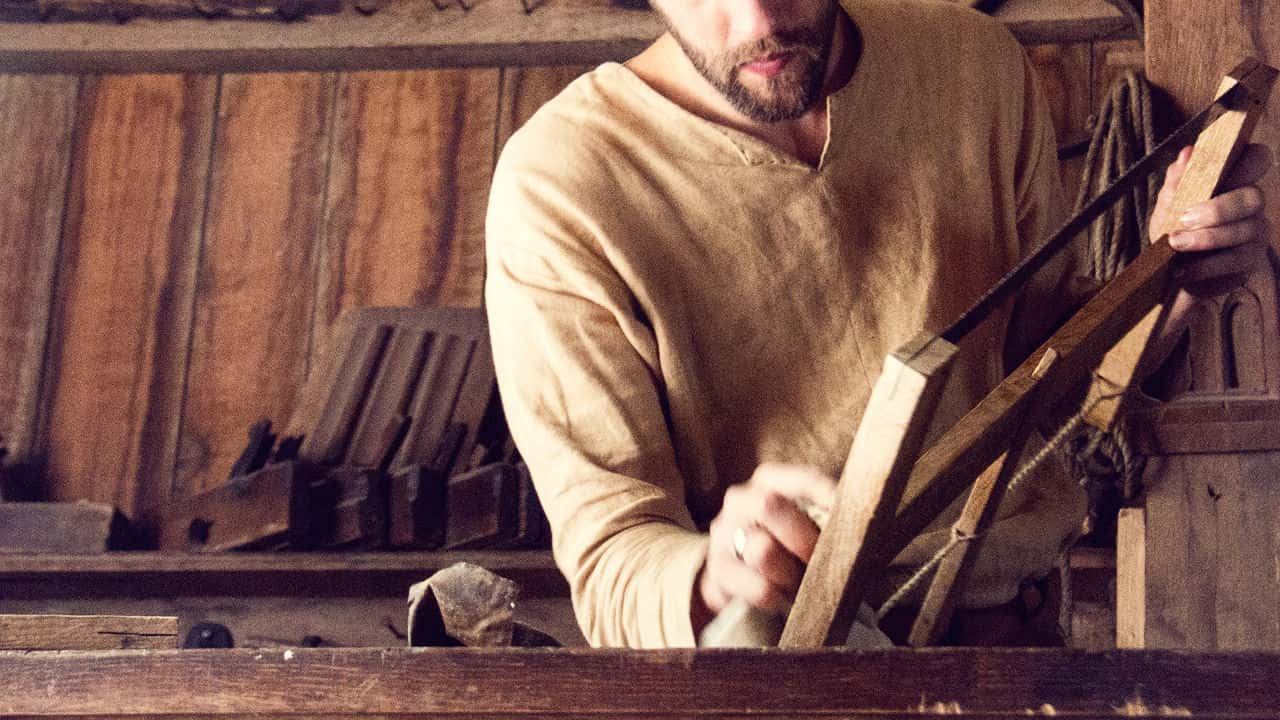 Congregational Church of Eastford
Congregational Church of Eastford
34. Worker of Stone
Originally, Jesus was described as a tekton, a Greek word which meant a "worker in wood," explaining why he was called a carpenter in translations, but wood wasn’t actually widely available during his time. This means he likely also worked with other materials, of which stone was most prevalent.
33. Long Haired Messiah
Remember those long-haired, blue-eyed portraits of Jesus you grew up around? Yeah, well those are probably not accurate. In fact, the Bible doesn’t describe the physical appearance of Jesus at all, and the earliest surviving mosaics of him are from about 350 AD. But it seems unlikely that he actually had long hair—in 1 Corinthians 11:14 Paul states that for a man to have long hair would be “disgraceful.”
32. Gotta Speak The Language
Language bridges the gaps of communication, and it's possible that Jesus spoke up to four languages, as he had to speak both Aramaic and Hebrew, was able to converse in Greek, and may have also been able to speak Latin, evident in a conversation with a Roman centurion in Matthew 8:13. This begs the question, can you speak as many languages as Jesus?
31. Pray To The Martyr
Originally, the term "Christian martyr" referred just to the Apostles, as they witnessed (remember the etymology?) the death of Christ—but as time went on and Christians themselves started to become persecuted, the word came to mean all of those who had been killed for their faith and testimony for Jesus Christ. Early Christians looked up to martyrs and considered them to be powerful names to be evoked in prayer. This collective memory over the suffering of the martyrs helped to form the Christian identity.
30. Conceptual Origins
While perhaps widely associated with the Christian faith, the idea of religious martyrdom actually appeared in Judaism first. The concept of voluntarily choosing death in the name of your god over life in the name of another stems from the conflict between the Jewish community and the Hellenizing Greek colonialists post-Alexander the Great. The Jews who resisted Hellenization were executed for the act of circumcision and for not eating pork.
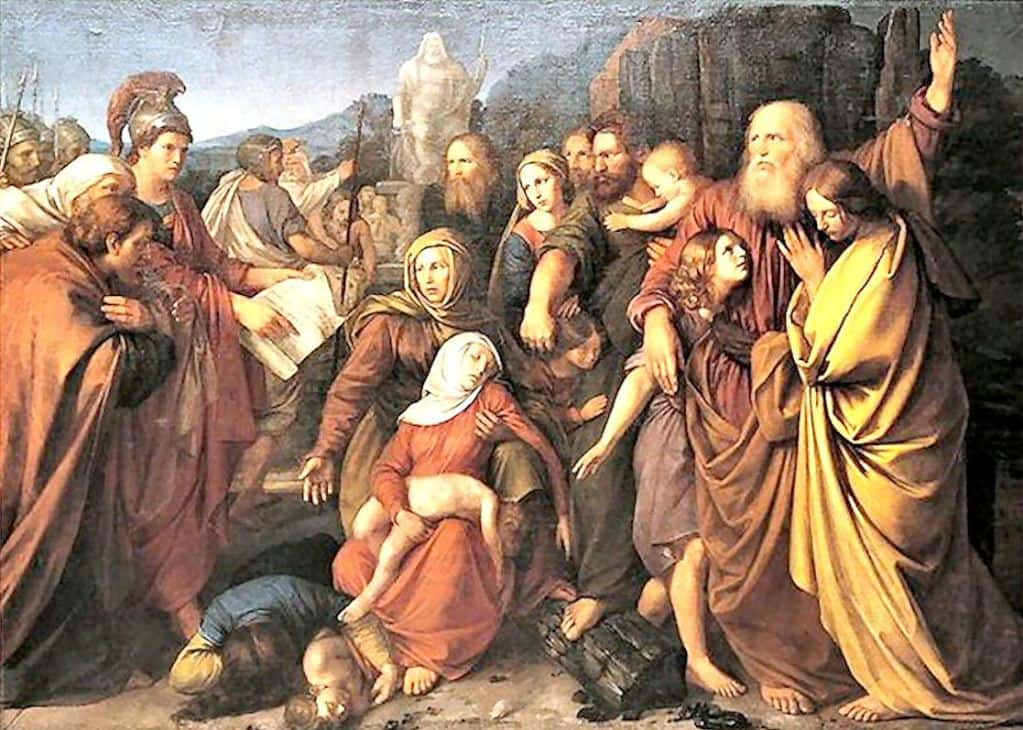 Salon Uroddy
Salon Uroddy
29. Torturous Heights
When Roman Emperor Nero went on his rampage to execute the Christians living in Rome, he did so in spectacular fashion, by tossing some into pits to be eaten by wild beasts and lighting those who had been crucified on fire in order to create human torches during the evening.
28. Bible’s Brother
In 1660, the Anabaptist Thieleman J. van Braght published Martyrs Mirror, also known as The Bloody Theater. The book details only the defenseless—as the Anabaptists believe in non-resistance—deaths of Christians from the time of Christ to the year 1660. The Amish and Mennonite communities consider this book second only to the Bible in religious importance.
27. 1,500 Pages of Martyrs
Before the Revolutionary War, the largest book to be printed in America was the Martyrs Mirror translation from Dutch. It took over three years for 15 men to produce the 1,512-page manuscript.
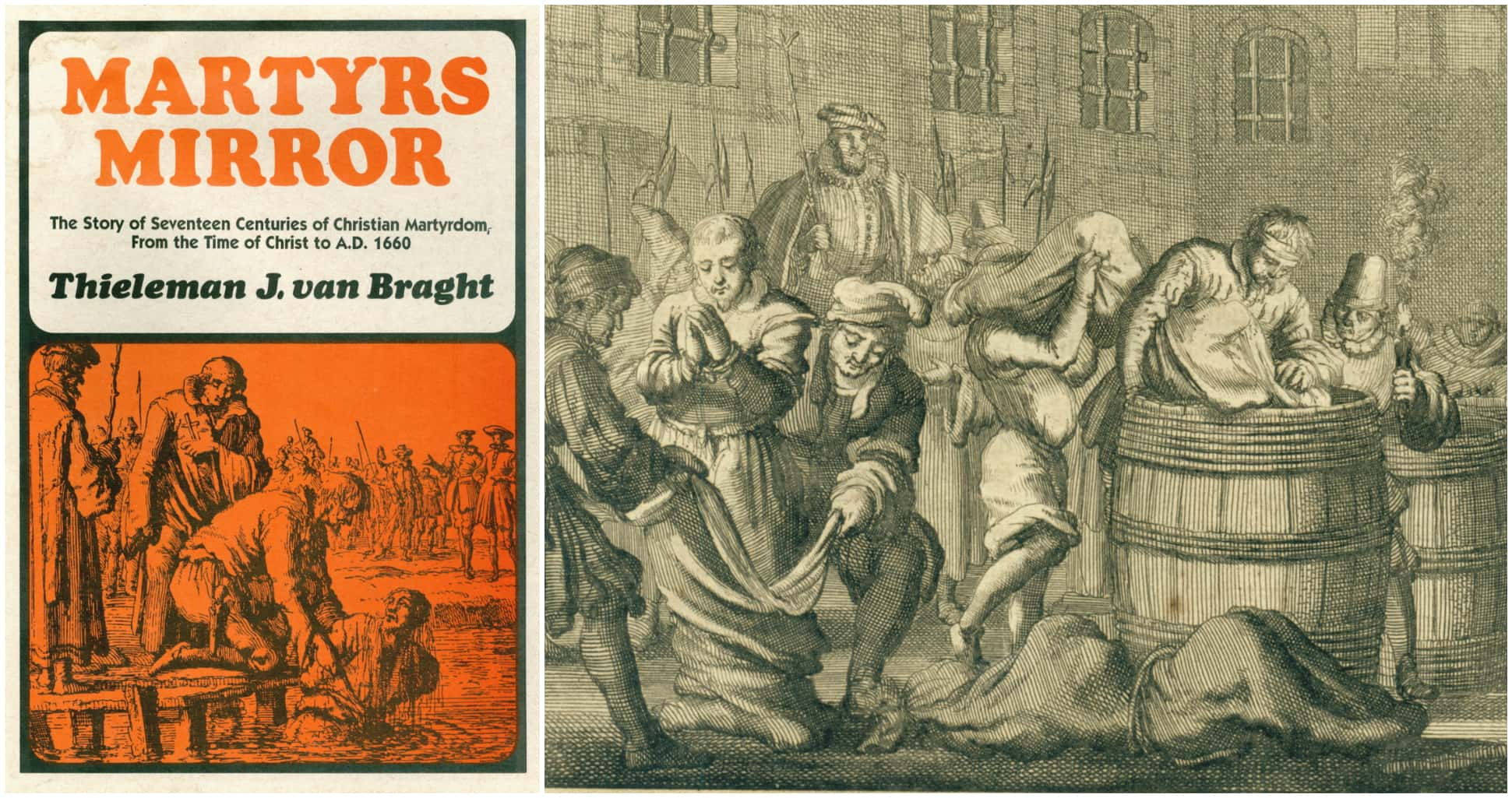
26. How Long Can A Title Be
If you think the page count of Martyrs Mirror is long, how about its full title: The Bloody Theater or Martyrs Mirror of the Defenseless Christians who baptized only upon confession of faith, and who suffered and died for the testimony of Jesus, their Saviour, from the time of Christ to the year AD. 1660. Yeah, that’s no joke.
25. Shaping England
What Martyrs Mirror was for the Dutch Protestants, Foxe’s Book of Martyrs was for the English Protestants, and this chronicle of Martyrdom was an essential piece of literature for the English Reformation. The text framed the Catholics as anti-Protestant and was thus a piece of anti-Catholicism propaganda produced in order to frame the English consciousness and harbor allegiances. The book is considered to be directly linked to the development of English nationhood and Whiggism. Not only was Foxe’s Book of Martyrs chained up to the Bible in cathedrals throughout England after it was published, but Oliver Cromwell’s army was encouraged to read it in order to connect fully into the Puritan consciousness.
24. Martyr Complex
There seems to be a complex for everything, and martyrdom is no exception. Martyr complex can take many forms, from people seeking out pain and suffering to fulfill a psychological need to be a martyr because of the association of martyrs and integrity, to people—particularly woman—suffering in the name of love, as in a codependent relationship or in the name of duty, when in a poor family.
23. The First Sikh Martyr
One of the most important moments in Sikhism was when Guru Arjan, the first Guru to be born into a Sikh family, became the first Sikh martyr in history. After creating the first Guru Granth Sahib, which is the main religious scripture of the religion, Arjan refused to convert to Islam and was executed by the Mughal Empire in 1606. This execution led to the militant tradition in Sikhism, as Arjan is said to have advised his sons to take up arms before he was executed.
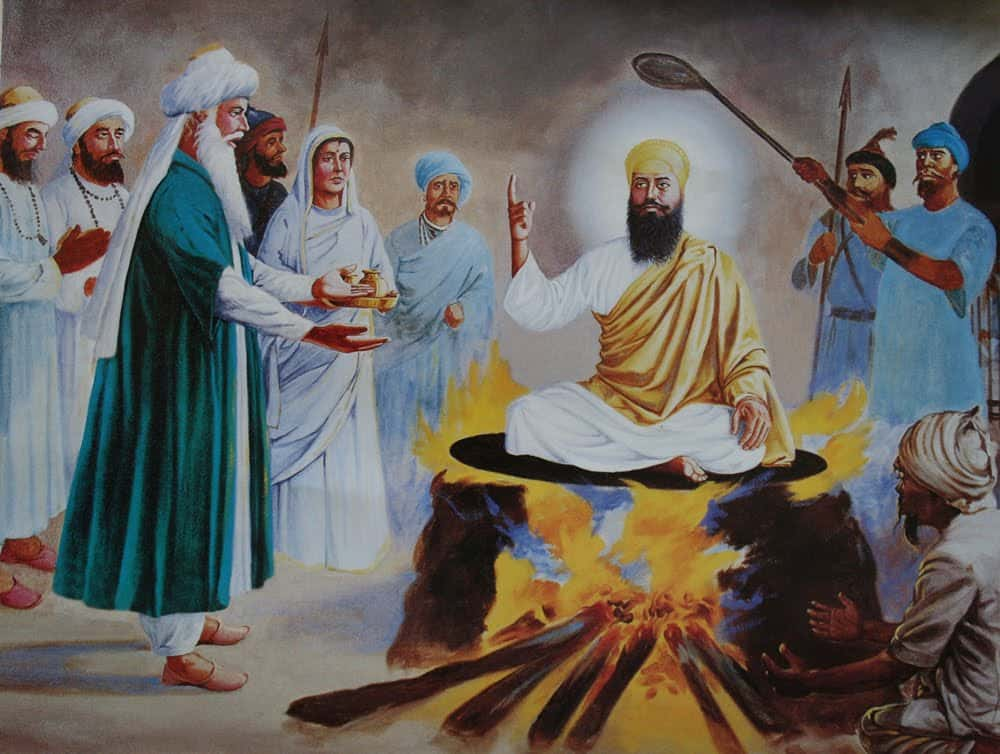 YouTube
YouTube
22. Found of the Warrior Community
After Guru Arjan was executed, all Sikh Gurus lived with bodyguards and a commitment to human rights. After Guru Tegh Bahadur was also beheaded for not converting to Islam, his son, the last of ten Gurus, Gobind Singh, founded the Khalsa—the warrior community of the Sikhs that has become one of their defining features.
21. Martyr For Many
The Islamic term for a martyr is a shahid, an Arabic word for "witness." While many black Americans view Malcolm X as a martyr, the Islamic community also sees him as an important shahid.
20. Not Proper Jihad
The contemporary perversion of Islamic Shahid has led to many extremists to commit suicidal attacks in the name of Allah. However, according to the Qur’an, suicide is prohibited, and not a proper form of jihad.
19. Death By Colonization
The many Muslims who were murdered during the European colonization of Northern Africa and the Middle East were considered martyrs and subsequently buried with Shahid.
18. Roman Memory
The story of the Ten Martyrs is considered to be one of the most important moments in Judaism's development, and it is detailed in a poem that is read at both Yom Kippur and Tisha b’Av. The Ten Martyrs were rabbis who were executed by the Roman Emperor Hadrian because he decided that some ancestors needed to be punished for the ten brothers of the Torah who sold Joseph to Ancient Egypt.
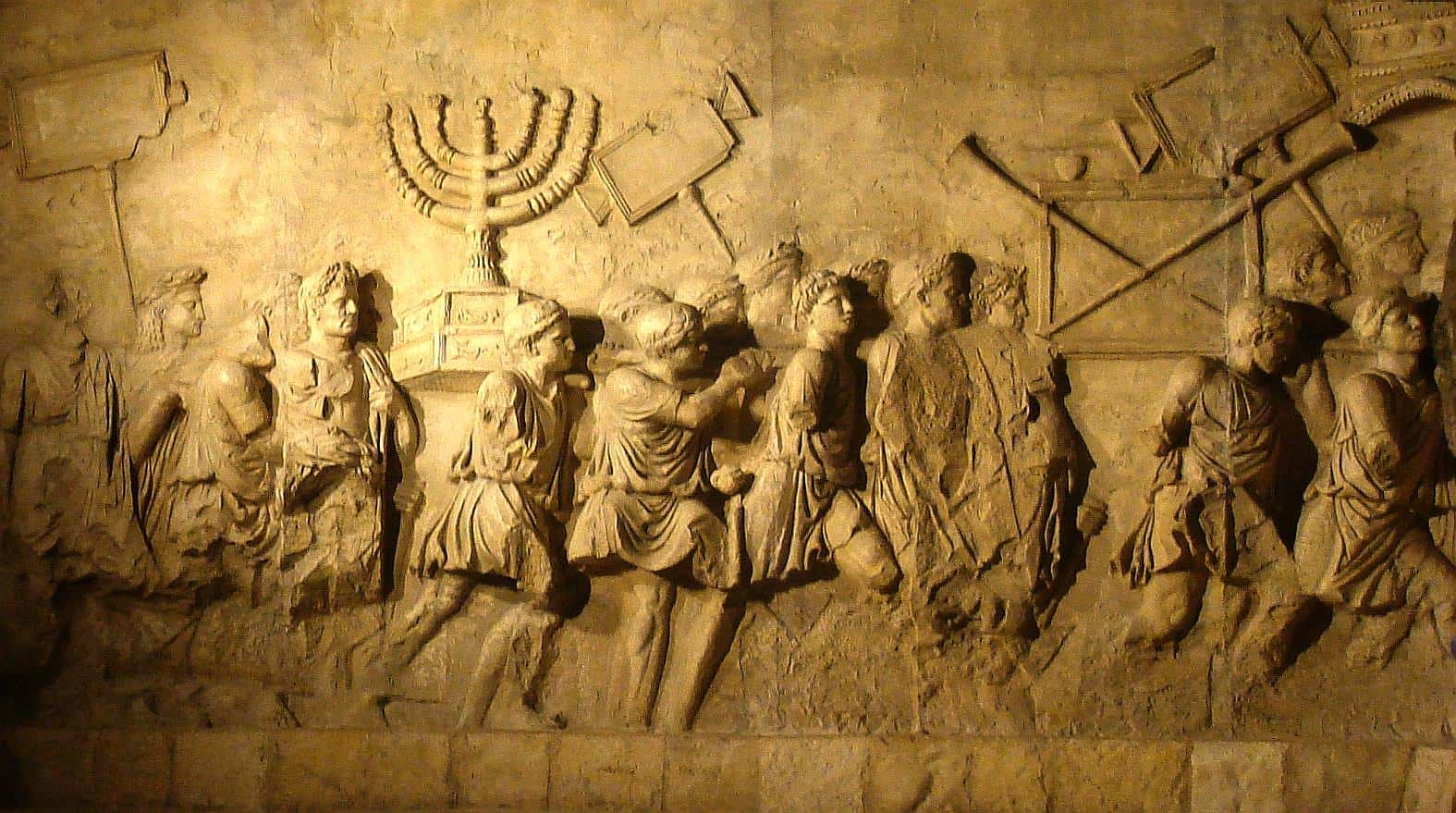 Feedspot
Feedspot
17. Face/Off
One of the rabbis murdered was Rabbi Yishmael ben Elisha ha-Kohen Gadol. Before he was executed, Hadrian's daughter requested that the skin of his face be flayed while still alive, this way she could have it, as he was coveted for his beauty.
16. Tortured With Iron
The most famous of the rabbis executed by Hadrian was Rabbi Akiva, who died by having his skin raked with iron combs. Rabbi Akiva became a legend because even though he was in excruciating pain, he still recited the Shema, the centerpiece prayer of Judaism, proclaiming God’s providence.
15. Holocaust Parallels
The Ten Martyrs story has evolved its moral meaning in modern times, as many Jews remembered Rabbi Akiva and recited the Shema when being led to the gas chambers during the Holocaust.
14. Telling On Their Brother
The largest auto-de-fé—the ritual procession of public penance for heretics during the Inquisition period—in history took place in Lima, Peru in 1639, when 12 Jewish martyrs were burned at the stake. One of the martyrs included Francisco Maldonado da Silva, a Marrano who learned of his Jewish heritage and converted, even though he knew of the ongoing Inquisitions. He was only imprisoned after he tried to convert his two sisters and they ratted him out.

13. Refusal to Escape Martyrdom
One of the most famous martyrs of all time is also the foundation for Western philosophical thought: Socrates. Lots of people know that Socrates died by drinking hemlock after being found guilty of disrespecting the Gods and corrupting the youth, but he actually could have escaped. A group of his students had set up a plan to get him out of the city and into safety, but Socrates refused and calmly accepted his death sentence.
12. Incite The Death Penalty
The jury which tried Socrates actually tried to give him a way out, but the man remained defiant and forced their hand into the death penalty. He could have asked for an alternative punishment to death, but instead, he riled the jury up by stating that he should actually be rewarded with honor and payments for his role in educating the youth. By that point, they pretty much had no choice but to sentence him to death.
11. Dance of Zalongo
During the Souliote War of 1803 in Southeastern Europe, the Souliote peoples were hounded and persecuted by the Ottomans. While in retreat from the town of Zalongo, a group of women and their babies was trapped in the mountains by the Ottomans. Understanding what would happen to them if captured, they decided to commit mass suicide. One by one, the women threw their children off of a cliff before jumping off themselves, all while singing and dancing. Their tragic end has become known as the Dance of Zalongo.
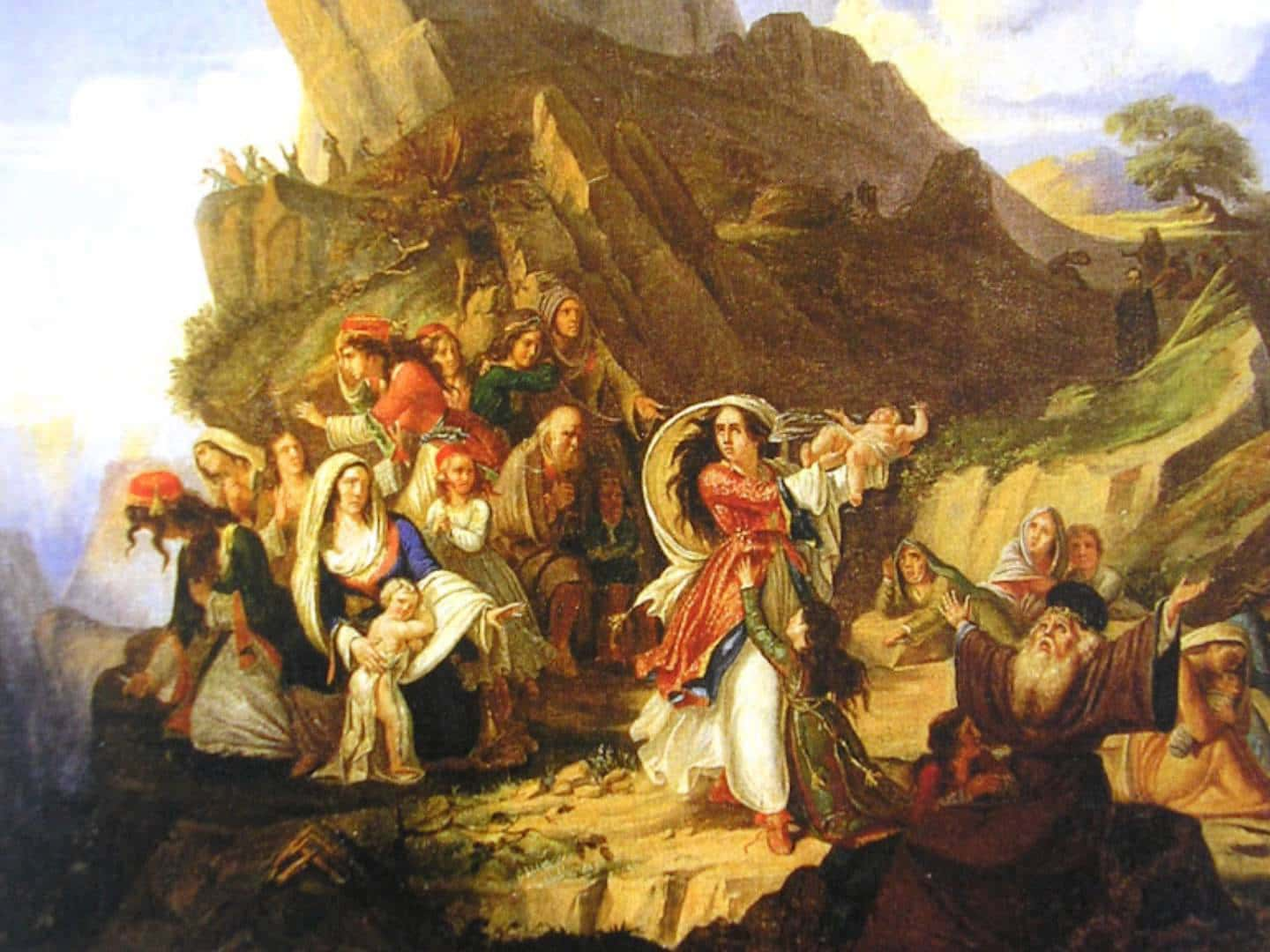 YouTube
YouTube
10. Psychiatric Disorders
Joan of Arc claimed to have heard voices in her head which inspired her to fight for France by resisting the English invasion and helping to establish Charles VII on the French throne. Her visions started around the age of 12, and she often said that a bright light accompanied the visions she had of angels and saints. Many modern theories as to what was going on include bipolar disorder, brain lesions, or even bovine tuberculosis, which was often contracted during this period by consuming unpasteurized milk. Some modern-day psychologists classify Joan’s strange experiences as auditory and visual hallucinations. Two Italian neurologists have recently suggested that she was suffering from genetic epilepsy that affected just one part of her brain, giving her those aural and visual hallucinations.
9. Wounded in Action
Joan of Arc is remembered as a fierce warrior, yet she never actually fought in a battle. Instead, she rode by the side of her men as a mascot and helped plan military strategy. However, just because she wasn’t on the front lines doesn’t mean she couldn’t be wounded. She was hit once with an arrow and once with a crossbow during campaigns.
8. Joan Didn’t Mess Around
Quickly rising the ranks, Joan of Arc was known for her ferocity. Once she reached the level of command, her ego and temper got the better of her. She was famous for attacking soldiers and even high ranking knights with her words. She would chase away the mistresses of soldiers and even once attempted to slap a Scottish soldier for eating stolen meat. Tough as nails this one was!
7. The Bob
When you think of the bob—the famous haircut of the early 20th century that was oh so scandalous—you probably don’t think of Joan of Arc, but you should. She cut her hair short after being told to do so by the voices in her head, and centuries later this inspired one of Paris’ most famous hairdressers, Monsieur Antoine. Antoine became inspired by Joan of Arc and began experimenting with his clients until he came up with the bob.
6. The Judge in the Matter
Saint Agatha of Sicily is one of the most venerated saints in Christianity, and her story is brutal. After promising herself to Jesus, the 15-year-old girl continually rejected the advances of Roman prefect Quintianus. Quintianus wasn’t so keen on being rejected, so he used her religion against her and had her arrested. After she was arrested she was to be tried in front of a judge. As if this wasn’t bad enough, the judge was none other than Quintianus himself.
5. Almost Saved By An Earthquake
After being sent to a brothel where she was repeatedly raped, she was then persecuted in a prison cell and had her breasts cut off. She was steadfast in her commitment, however, and in turn was to be burnt at the stake. However, she was saved by an earthquake, which hit right when she was meant to be executed. She was imprisoned again and died while in confinement.
4. Dessert Inspiration
The patron saint of breast cancer patients and rape victims, Saint Agatha has birthed a tradition of desserts, which in Sicily, her birthplace, are known as Minne di Sant'agata or Minni di Virgini. The sweets are breast-shaped fruit buns, covered in icing and topped with a cherry, in an imitation of a nipple.
3. Cult of Virginity
Saint Cecilia is the virgin saint, patron of musicians. After being married to a man without her consent, she informed her new husband that she took a vow of virginity and promised herself to Jesus. If he were to have sex with her, her guardian angel would come down and harm him. Naturally, the husband, a man named Valerian, wanted some proof, so he was baptized in order to gain a glimpse of her guardian angel, which he indeed witnessed crowning Cecelia with a wreath of flowers.
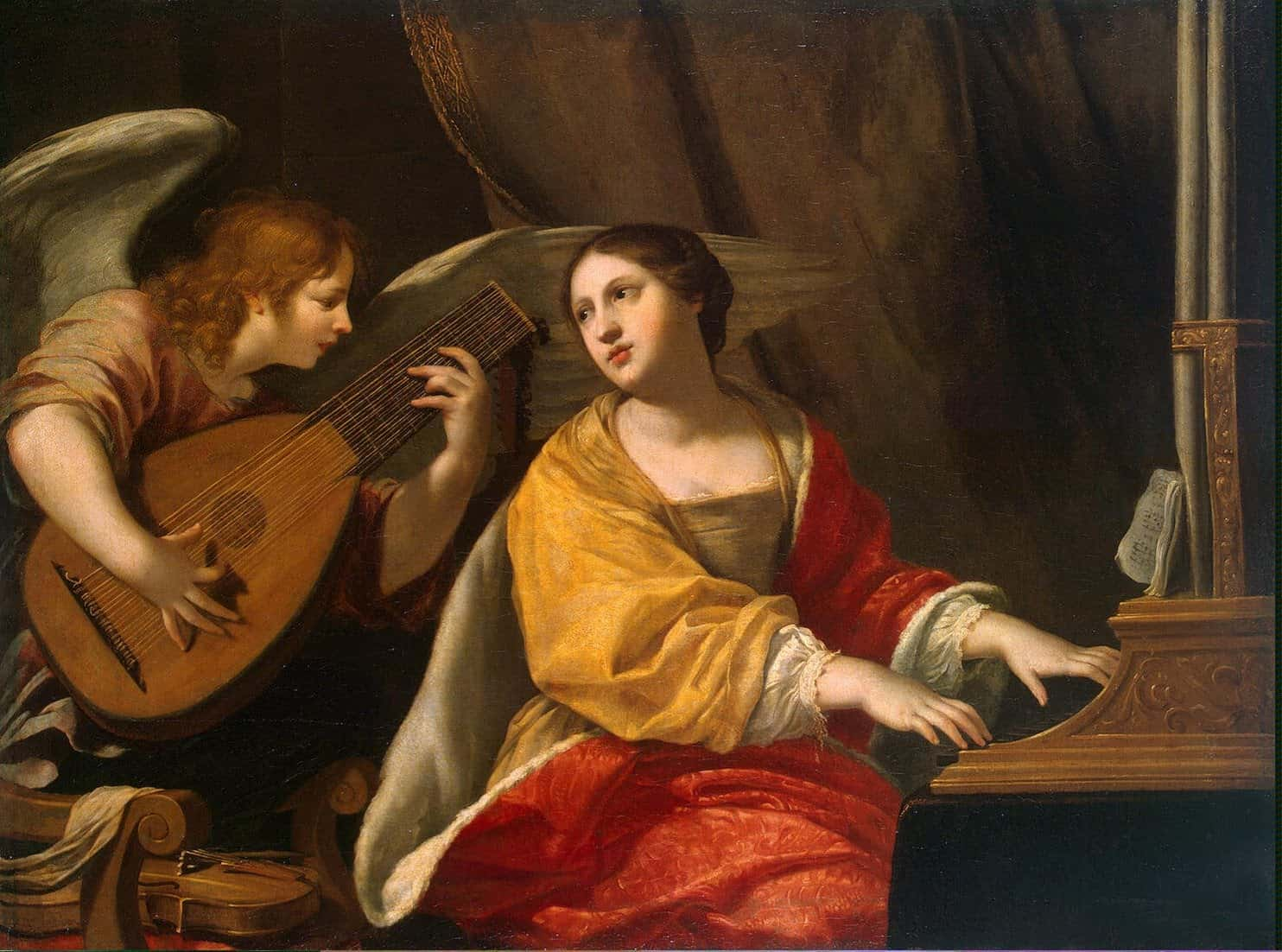 YouTube
YouTube
2. Body All Good
The body of Saint Cecilia is said to have been found in an incorruptible state in 1599, meaning that it had not gone through a normal state of decomposition, even a millennia after her death. The concept of incorruptibility in both the Roman Catholic and Eastern Orthodox faiths is the belief that divine intervention prevents the bodies of some saints from undergoing the natural process of death.
1. No Murderers Here
During the 1920s, Mexico went on a widespread persecution campaign against Catholics, and as a result, there were many martyrs. One of them was Father Jose Maria Robles Hurtado. The day after being arrested for preparing a Mass, he was to be executed by hanging. In a show of unparalleled sympathy, Hurtado refused to allow any of his captors to tie the noose around his neck, as he didn't want them to become murderers. Instead, he fashioned it around his own neck himself.
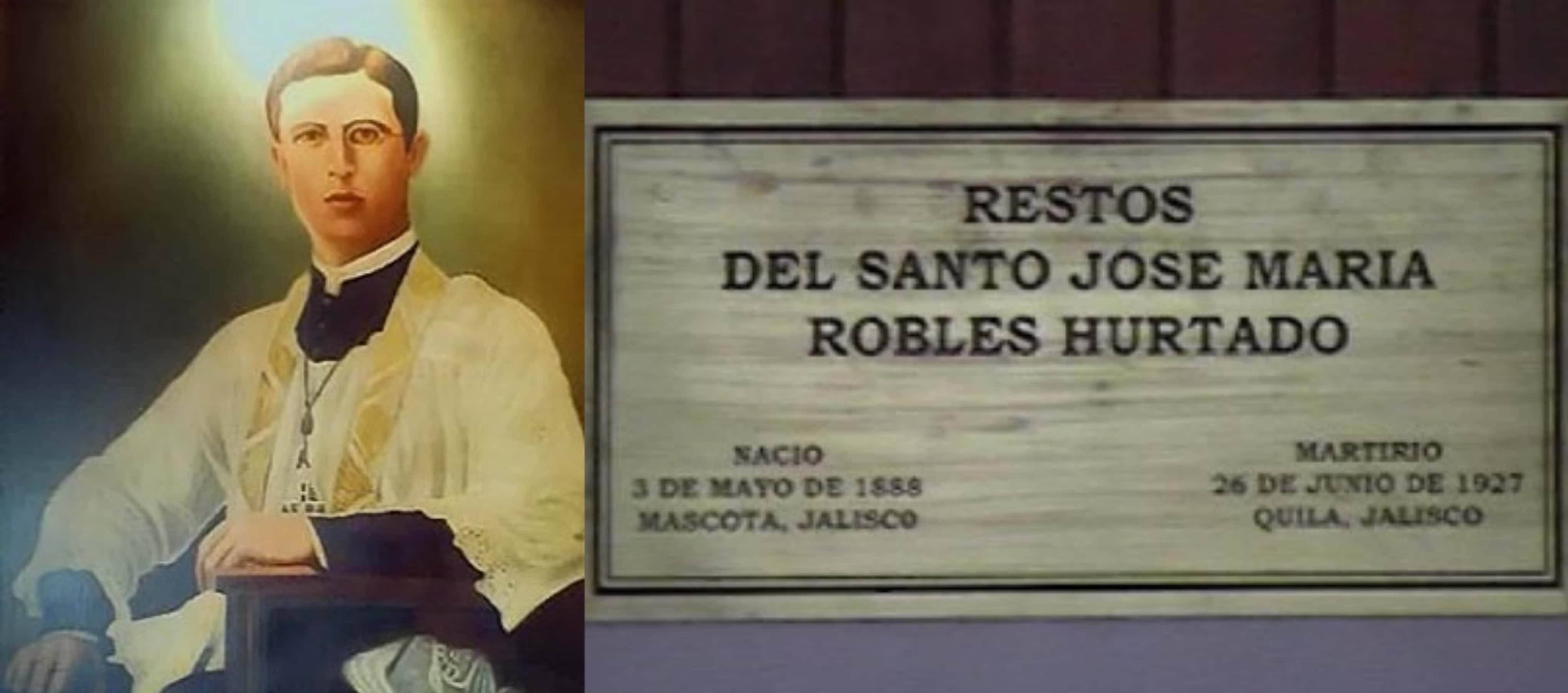
Sources: 1, 2, 3, 4, 5, 6, 7, 8, 9, 10, 11, 12, 13, 14, 15, 16, 17, 18, 19



